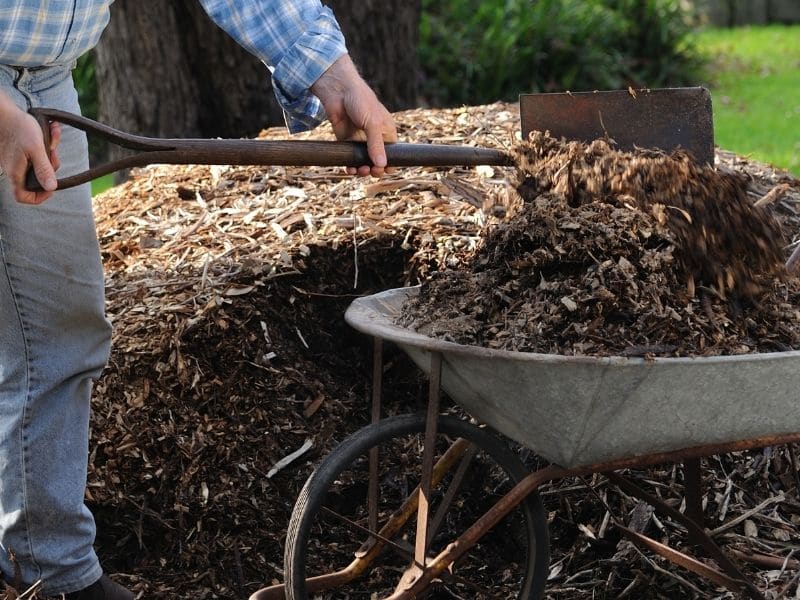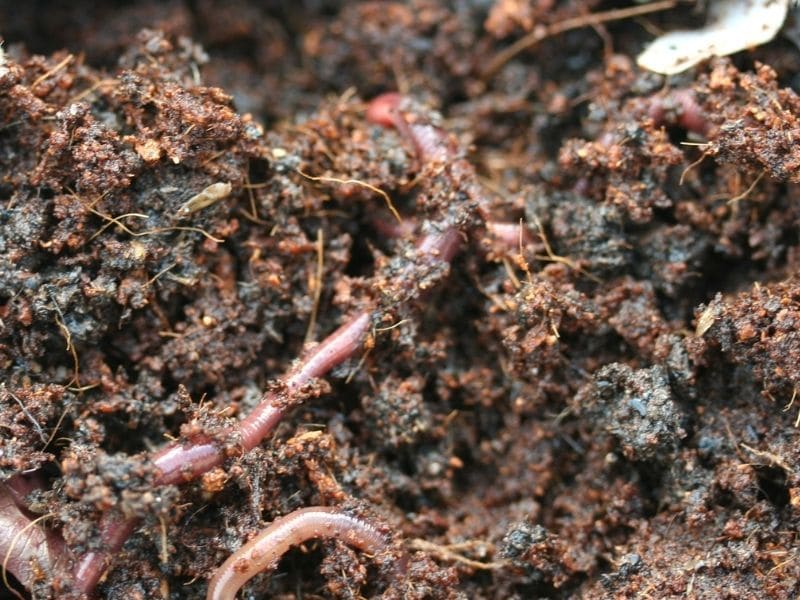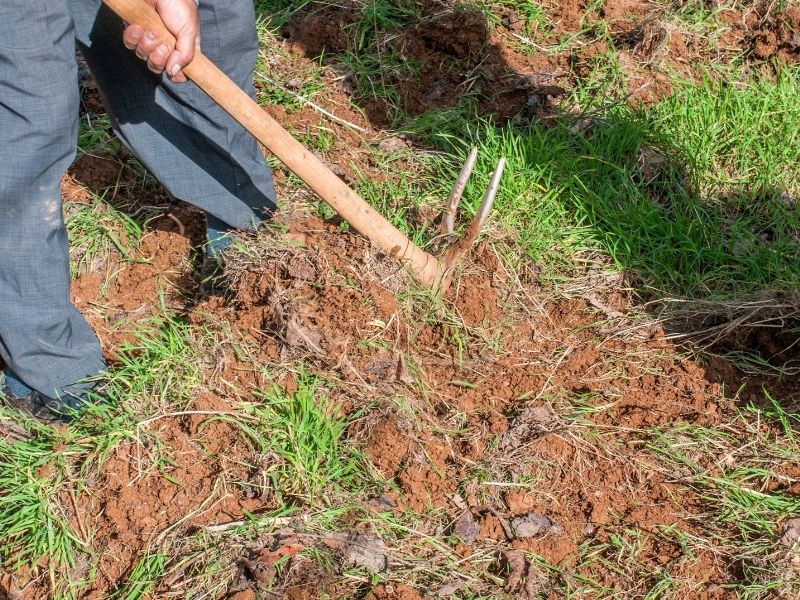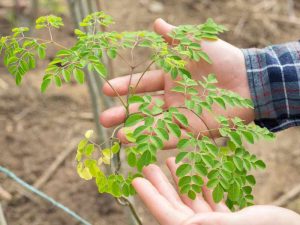Sheet mulching is a key strategy in an organic permaculture garden. But if you are new to gardening in a sustainable way, you might be a little confused about sheet mulching and exactly what this strategy entails.

So why is sheet mulching a good idea, and how can you adopt this approach in your own garden.
What Is Sheet Mulching?
Sheet mulching is a ‘no dig’ or ‘no till’ gardening approach. Rather than digging in organic matter, as in many traditional gardens, sheet mulching involves laying organic matter on the surface of the soil around your plants to compost in place. Sheet mulching is a way to protect the soil, and it is a healthy and fertile approach. This method of garden soil preparation is a way to work with nature in your garden rather than fighting it.
Understanding no-dig gardening and sheet mulching, in particular, involves understanding the soil in your garden. It is important to recognize that soil is far more than just ‘dirt’.
Soil is a complex web of living organisms, which work together in a range of complex ways. Healthy soil is the foundation for a healthy garden, healthy plants, healthy people, and a healthy planet.

Soil is made up of minerals, organic matter, water, air, and micro-organisms. Ensuring that these elements are in balance is key to successful organic gardening.
When we dig or till the soil, we can disrupt this balance. Sheet mulching protects the existing soil system. It also helps to restore degraded soil and improves the quality of the subterranean ecosystem over time.
Sheet mulching involves adding organic materials as a layer over the soil surface. These layers might be:
- Carbon rich organic matter such as wood chip, straw, or cardboard.
- Nitrogen rich green organic matter – materials like leaves, grass clippings, kitchen waste, etc.
- Partially decomposed organic matter, such as composts, manures or leaf mold.
Why Is Sheet Mulching a Good Strategy?
Sheet mulching is a way to improve the organic matter content of your soil while keeping the soil food web healthy. This is beneficial for a range of reasons:
| Increased organic matter improves soil structure and aeration, reducing waterlogging issues and compaction in areas with heavy soils. |
| Sheet mulching also improves light and free-draining soils – improving water retention and reducing issues with nutrient losses. |
| By covering areas of bare soil with plants and mulches, you can reduce any issues with run-off and erosion of the soil below. |
| Sheet mulching can reduce the temperature of the soil in hot areas by shading and insulating the soil. |
| Sheet mulching can also suppress weed growth and reduce the competition of the weeds and crops for nutrients and water. |
| Sheet Mulching reduces evaporation of water from the soil surface, meaning that you can conserve water in your garden and reduce irrigation needs. |
| Increasing organic matter in the soil also increases and helps to retain soil organic carbon, sequestering more carbon in the soil and keeping it out of our atmosphere. |
| Organic matter in the soil also helps ensure a healthy microbial population and the availability of essential nutrients like nitrogen, phosphorus, and potassium, as well as other nutrients and micronutrients which plants need. |
The Benefits Of Sheet Mulching Go Beyond The Soil
Sheet mulching is also better for you personally as a gardener. It can save you the backbreaking work of digging in the organic matter since the soil life will incorporate the materials for you and break them down over time in a healthy garden.
Also, because sheet mulching does an excellent job of suppressing weeds, this method can save you hours of intense backbreaking work pulling weeds.
This strategy can also save you money since you may well be able to make use of natural and waste materials you already have on your property, rather than buying and bringing in materials for the garden.

How To Start Sheet Mulching in Your Garden
Sheet mulching can be implemented to create a new garden or used to improve an existing growing area.
If you are creating a new garden bed or growing area using sheet mulching techniques, this is sometimes referred to as creating a ‘lasagna bed’. It is also referred to commonly as composting in place.
The principles of creating a lasagna or sheet mulching bed are very similar to those involved in building a compost heap or filling a composting container. The only difference really is that rather than confining the materials to a particular dedicated area, they are spread out over your growing area to break down over time slowly.
As in a composting system, the key to successfully adopting this approach involves carefully balancing brown carbon-rich and green nitrogen-rich materials. These are added in thin layers and built up over time.

11 Steps To Start A Lasagna Garden:
Step 1. Mark out your new growing area. Make sure that it is of a size that allows you to reach the whole area without stepping on and compacting the bed.
Step 2. Position bed edging if required (remember to consider natural or reclaimed materials).
Step 3. Remove any particularly problematic weeds from the area, which may grow through sheet mulching.
Step 4. Layer cardboard over the marked out area. Be careful to remove any plastic tape or stickers from the cardboard. Also, don’t use glossy or heavily colored cardboard for this purpose.
Step 5. Cover this cardboard with a 2-inch layer of carbon-rich organic material.
Step 6. Next, add a 2-inch layer of nitrogen-rich organic material.
Step 7. Continue to layer materials to reach a depth of at least 6-12 inches or until a raised bed reaches the desired height.
Step 8. Add a top layer of compost or other partially decomposed material so your bed can be planted up or sown into right away.
Step 9. Mulch over the surface between plants with an additional layer of carbon-rich material.
Step 10. Keep the bed sown and planted throughout the year (using green manures or cover crops to protect the soil in winter).
Step 11. Add new layers of nitrogen-rich then carbon-rich materials each spring.
You can also improve areas of existing planting by adding layers of nitrogen-rich and carbon-rich materials as mulch around the plants. Just make sure that when sheet mulching around existing trees, shrubs, and other plants, that you keep the mulch materials away from the stems/ trunks of the plants as the mulch materials can cause rotting if heaped around them.



